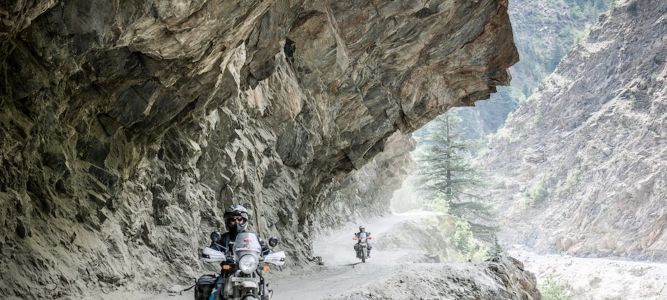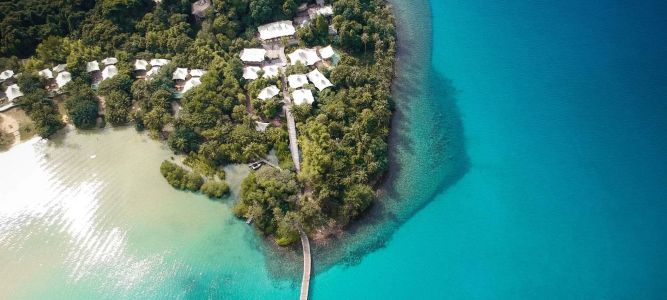How to Prepare for an Extreme Outdoor Adventure: A Step-by-Step Guide
- Why Prepare for an Extreme Outdoor Adventure?
- Physical Fitness for Extreme Adventures
- Essential Gear and Equipment for Extreme Adventures
- Mental Preparation and Survival Skills
- Choosing the Right Destination for Your Extreme Outdoor Adventure
- Case Study: Preparing for an Extreme Hiking Trip
Why Prepare for an Extreme Outdoor Adventure?
Extreme outdoor adventures can push your limits, both physically and mentally. Whether you're trekking through rugged mountains, kayaking in wild rapids, or embarking on a remote camping trip, thorough preparation is key to ensuring your safety and enjoyment. Without proper preparation, the risks associated with extreme outdoor activities can be overwhelming.
By preparing effectively, you’re not just minimizing danger; you’re also enhancing your experience, allowing you to fully immerse in nature’s beauty, while conquering challenges and building unforgettable memories.
Physical Fitness for Extreme Adventures
Your fitness level plays a major role in how well you handle the physical demands of an extreme outdoor adventure. For example, mountain climbing, backcountry skiing, or multi-day hiking trips require cardiovascular endurance, strength, and stamina. Here are some key fitness components to focus on:
- Cardiovascular Fitness: Train your heart and lungs with activities like running, cycling, or swimming to prepare for long, strenuous days outdoors.
- Strength Training: Focus on building core strength and leg muscles for climbing, carrying heavy packs, or navigating challenging terrain.
- Flexibility: Stretch regularly to maintain flexibility and prevent injury, especially for activities like rock climbing or kayaking.
Starting your fitness regimen months ahead of your adventure will give you the time needed to build the endurance and strength required for the extreme challenges you’ll face outdoors.
Essential Gear and Equipment for Extreme Adventures
Having the right gear can make or break your experience during an extreme outdoor adventure. Depending on the activity, you will need to invest in specific equipment that ensures safety, comfort, and effectiveness. Here are some must-have items for various types of extreme adventures:
- Backpacking: A high-quality backpack, sleeping bag, tent, and reliable footwear are essential for any long hiking trip.
- Mountain Climbing: Climbing shoes, a harness, ropes, ice axes, and a helmet are critical for navigating steep, rocky terrain.
- Kayaking or Canoeing: A durable, waterproof dry bag, life vest, paddle, and appropriate boat for the conditions.
Additionally, for any extreme outdoor activity, you should always bring a first-aid kit, navigation tools (compass, GPS), and weather-appropriate clothing. Research the environment and conditions beforehand to ensure you bring everything you need to stay safe and comfortable.
Mental Preparation and Survival Skills
Extreme outdoor adventures aren’t just about physical strength — mental resilience is equally important. There will be moments when the going gets tough, and your mindset will determine whether you succeed or give up. Here’s how you can mentally prepare:
- Stay Calm Under Pressure: Whether you’re lost or facing unexpected weather, staying calm and making thoughtful decisions is crucial.
- Embrace Challenges: Recognize that extreme outdoor activities are filled with obstacles, and those challenges are what make the experience rewarding.
- Survival Skills: Learn the basics of outdoor survival, such as building a fire, purifying water, or navigating using natural landmarks. These skills can save your life if things go awry.
Taking wilderness survival courses and practicing your skills in a controlled environment before your adventure can help you build confidence and improve your response to emergencies in the wild.
Choosing the Right Destination for Your Extreme Outdoor Adventure
Choosing the right destination is a huge part of your preparation process. The location will dictate the type of gear you’ll need, the level of difficulty, and the potential risks. Some famous destinations for extreme outdoor adventures include:
- Patagonia, Argentina: Famous for its rugged landscapes, Patagonia is ideal for experienced trekkers looking to explore glaciers, mountain ranges, and remote wilderness.
- The Swiss Alps: The Alps offer world-class climbing, skiing, and hiking for those looking to challenge themselves amidst stunning alpine scenery.
- Moab, Utah: Known for extreme sports such as rock climbing, mountain biking, and off-roading, Moab is a mecca for outdoor adventure enthusiasts.
Make sure you research each destination thoroughly, including the weather conditions, local wildlife, accessibility, and any permits or regulations needed for your chosen activity.
Case Study: Preparing for an Extreme Hiking Trip
Take the example of Jane, an avid hiker who decided to take on the notorious John Muir Trail in California. Jane’s preparation started six months in advance, focusing on:
- Physical Training: She began with weekend hikes, gradually increasing the difficulty and weight of her backpack to build endurance.
- Gear Selection: Jane invested in a high-quality backpack, waterproof boots, a compact stove, and an ultralight tent for a comfortable camping experience.
- Emergency Planning: Jane learned basic wilderness first aid, practiced setting up her tent in the dark, and ensured she was equipped with a GPS and maps for navigation.
When she finally completed the John Muir Trail, Jane felt a sense of accomplishment, knowing that her preparation had helped her tackle each challenge along the way. Her story is a perfect example of how thorough planning and mental preparation can turn an extreme adventure into a life-changing experience.





